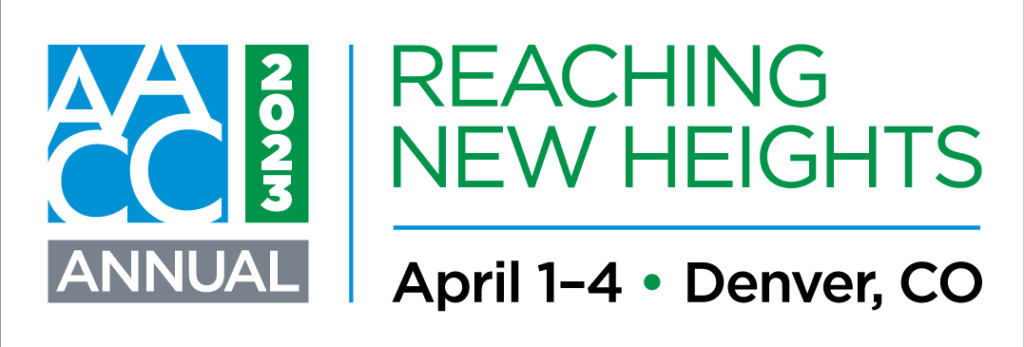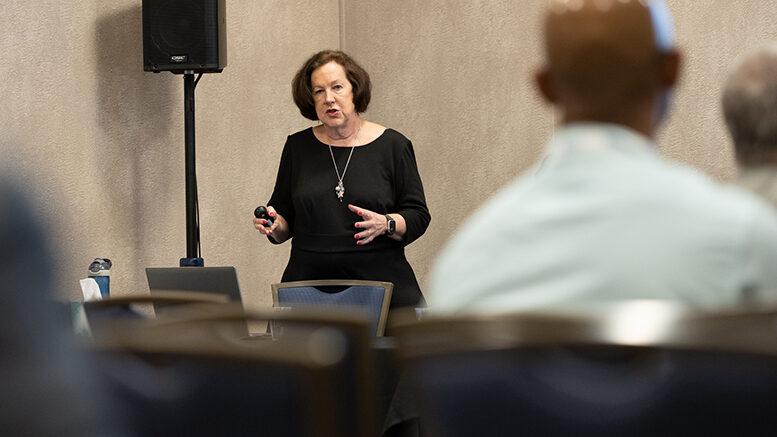DENVER — When community colleges work to close the digital divide, it benefits not only students, but also their families and the workforce.

The Connecting Minority Communities (CMC) pilot program through the National Telecommunications and Information Administration (NTIA) was launched, in part, to help expand broadband internet access. Grants were awarded in 2022 to historically Black colleges and universities, tribal colleges and universities and minority-serving institutions to purchase equipment and hire and train information technology personnel.
Of the 93 grants awarded, 16 went to community colleges, for a total of $40 million in CMC grants.
At the 2023 AACC Annual, leaders of two of those colleges discussed how the CMC grants are helping their colleges and communities. NTIA representative also shared ways colleges can benefit from other broadband grants.
Investing in students, families
Drake State Community & Technical College in Alabama received a $2.4 million CMC grant. The college, located in an under-resourced pocket of Huntsville, needed to update its digital infrastructure.
Over the course of two years, the college will distribute more than 850 enabled laptops to students – and help to maintain them – and increase at-home broadband access for Drake State students and their family members by providing home wireless broadband kits.
“When you invest in families, it has a ripple effect,” said Drake State President Patricia Sims. “That’s how you transform communities.”
Drake State is partnering with Western Governors University for faculty training. The college also is working with neighboring Alabama A&M University to implement secure, online student access to learning, teaching and research resources, mental health services or other assistance.
Connecting a nation
The Tohono O’odham Nation is located on 2.8 million acres of land. Tohono O’odham Community College (TOCC) is in the center of the Nation, in Sells, Arizona. Some students have to drive 1.5 hours to get to campus. Online classes can alleviate some of that travel – but not every household is connected to the internet – or can afford broadband – and not every student has the digital literacy skills.
With the college’s $1.9 million CMC grant, TOCC is able to address the digital divide experienced by remote tribal households. The college is serving three levels of beneficiaries. First, they’re providing computers to people who have never used a computer and giving them the skills needed to engage in telemedicine, online banking and video conferencing to help people connect with family members who live outside the Nation.
TOCC’s second level of service is providing continuing education so people can gain software skills to be employable. They’re helping people to complete a GED and enroll and attend TOCC.
And third, the college will take training further to help advanced users and the technical workforce by helping students engage in degree and certificate programs. The goal is to build a capable digital workforce for the Tohono O’odham Nation, said Mario Cesar Montes-Helu, dean of sustainability for TOCC.
Another benefit of this work for the Tohono O’odham Nation is that members of the community can take online classes to refresh knowledge of the language of the Tohono O’odham people, “which is disappearing,” Montes-Helu said.
Connecting with states
Though the CMC pilot grants have already been awarded, community colleges can benefit from NTIA state grants, said Karen Archer Perry, a senior policy analyst for the office of Internet Connectivity and Growth at NTIA.
The Broadband Equity, Access & Deployment (BEAD) Program provides $42.45 billion to expand high-speed internet access by funding planning, infrastructure deployment and adoption programs in all states and territories.
States are currently developing plans on how they will use funding to reach underserved communities.
In addition, through the Digital Equity Act, $1.4 billion will be distributed to states for digital equity work, specifically for training and workforce development. As with BEAD, states are working on their plans for how to use grant funds.
During the planning process, community colleges should reach out to their state broadband office to be included in those plans, Perry said.
Colleges can learn more about these programs at Internetforall.gov and learn more about other funding opportunities here.

